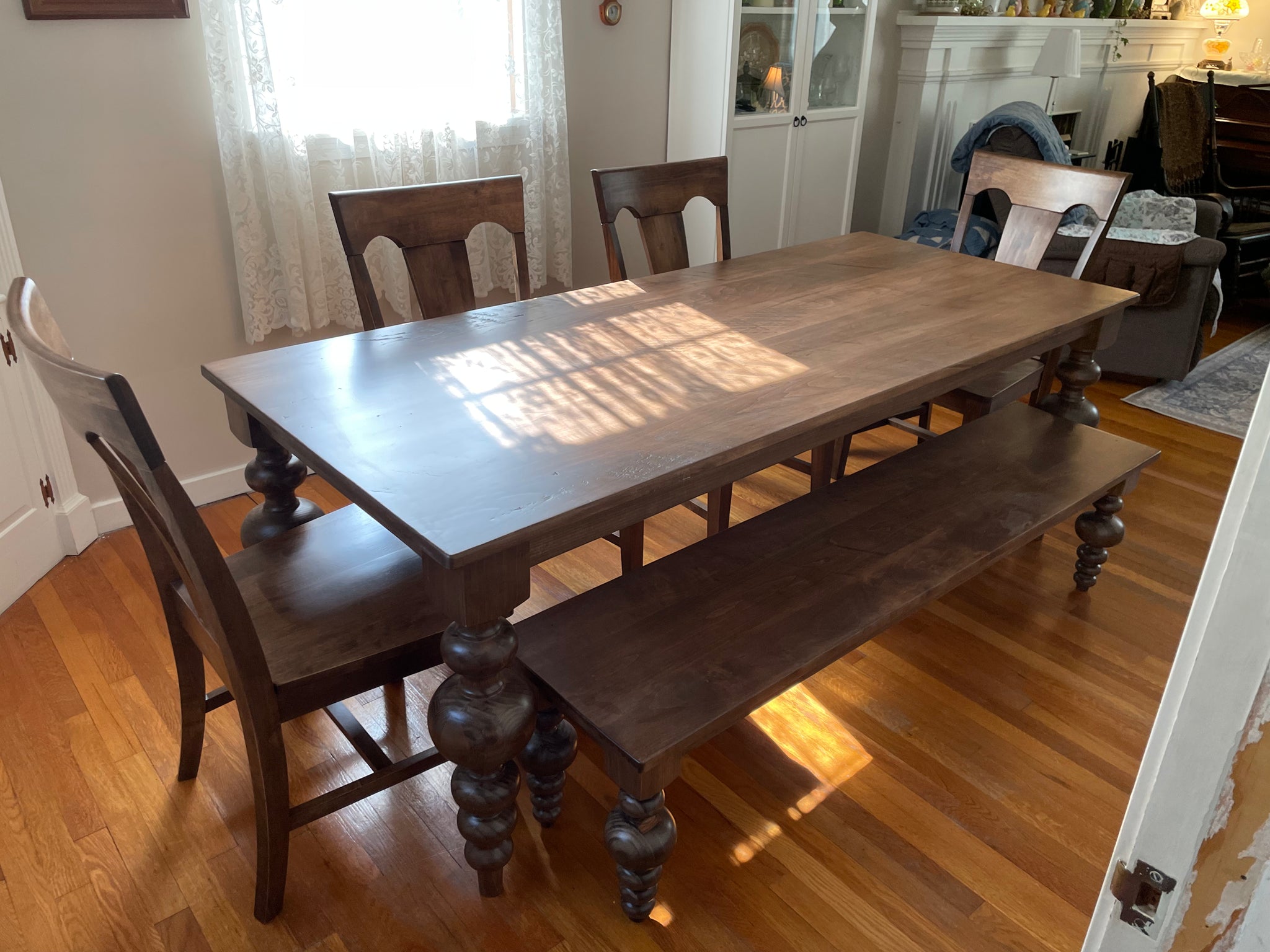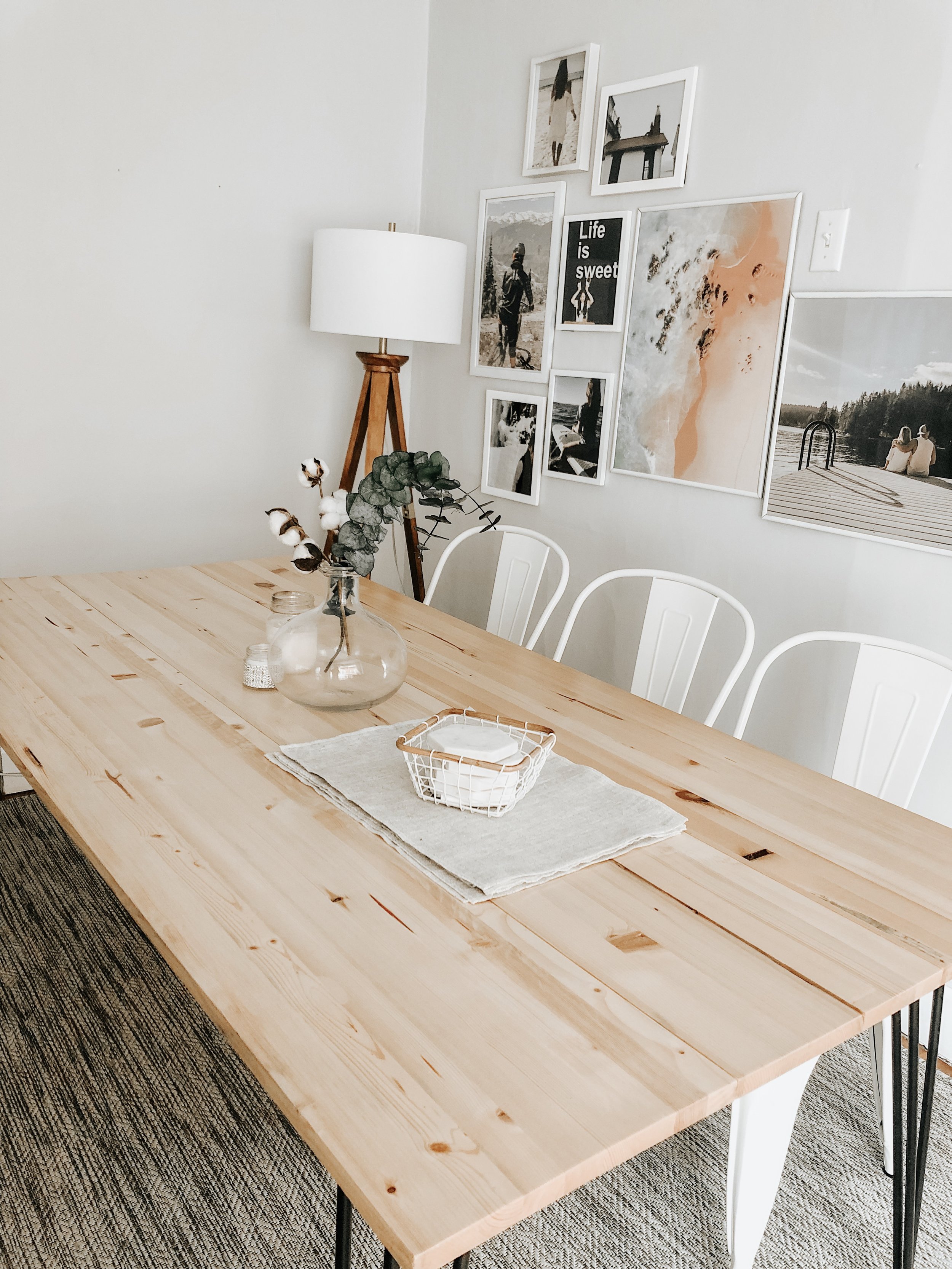Enhance Your Dining Room with Unique and Modern Dining Room Table Legs
Enhance Your Dining Room with Unique and Modern Dining Room Table Legs
Blog Article
Professional Tips for Installing Dining-room Table Legs for Optimum Security
When it comes to mounting dining room table legs, accomplishing maximum security is critical for both capability and aesthetics. What particular strategies can improve stability even further?
Choose the Right Legs
When picking the appropriate legs for your dining-room table, it is important to think about both performance and looks. The legs you pick will significantly affect the overall design and security of the table. Examine the table's meant use; if you expect regular celebrations, sturdier legs, such as those made from strong wood or metal, might be extra suitable, as they supply enhanced toughness and assistance.
Following, think about the elevation and design of the legs in regard to the table top. Standard dining tables generally vary from 28 to 30 inches in elevation, so make certain the legs align with this standard for convenience. The style of the legs should enhance the design of the tabletop-- whether it be modern-day, rustic, or standard. Tapered legs can include a contemporary touch, while transformed legs may communicate an extra traditional visual.

Select Appropriate Equipment
Just how can the appropriate hardware boost the stability and long life of your dining room table? The option of ideal hardware is essential to making sure that the legs of your table are safely affixed and able to withstand routine usage. High-grade screws, bolts, and brackets supply the needed strength to support the weight of the table, in addition to any kind of additional loads put upon it throughout celebrations or dishes.
When picking screws, choose for those made from durable materials such as stainless steel or brass, which stand up to rust and preserve stability gradually. The length of the screws is equally crucial; they ought to penetrate deeply into the table's framework without endangering integrity. For bolted links, take into consideration using lock washers to avoid loosening because of resonance or motion.
Furthermore, utilizing corner braces can include additional support, especially for bigger tables or those with heavier tops. These brackets disperse weight uniformly and help preserve the table's shape. Ensuring that the hardware you select is appropriate for the specific products of your table will further boost its total security and durability, allowing you to appreciate your eating experience for many years to come.
Ensure Correct Placement
Correct positioning of dining area table legs is vital for both aesthetic appeal and practical stability. Misaligned legs can bring about an irregular tabletop, which might not only be aesthetically unappealing yet likewise endanger the table's use. To attain ideal placement, begin by gauging the range from the table's corners to the leg accessory factors. This ensures that each leg is located equidistant from the sides, producing a balanced look.
Use a degree during installation to verify that each leg is vertical to the tabletop. It is recommended to mark the preferred leg positions on the underside of the table with a pencil or covering up tape prior to protecting them.
Furthermore, ascertain the alignment after the initial screws are tightened, as modifications may be required before completely securing the hardware. By prioritizing proper alignment, you not just boost the table's total design but also guarantee that it remains functional and stable for years ahead.

Consider Weight Distribution
After making sure appropriate alignment of the dining-room table legs, it's vital to take into consideration weight distribution to enhance security and functionality. dining room table legs. Proper weight circulation is important in preventing wobbling and making certain that the table can support its intended tons without danger of tipping or falling down
When positioning the legs, ensure they are positioned at equal ranges from the facility of the table to evenly distribute the weight across the framework. Take into consideration the weight of the tabletop and any type of items that will often relax on it, such as tabletop appliances or attractive items. Tables with heavier surfaces should ideally have legs located closer to the edges, as this maximizes the base of support and reduces the risk of instability.
In addition, if the table is intended for use in a high-traffic area, take into consideration making use of heavier products for the legs or adding maintaining elements, such as cross-bracing or a lower rack - dining room table legs. These modifications can help maintain equilibrium and prevent shifting throughout use. Eventually, a well-considered weight circulation technique check that will dramatically boost the table's general efficiency, ensuring it stays a attractive and practical focal point for your dining room
Examination Security Prior To Use
Checking the security of the dining space table prior to usage is a crucial step that needs to not be forgotten. Guaranteeing that the table is safe and steady can avoid mishaps and lengthen the lifespan of the furniture. Begin by using gentle stress to numerous points on the table surface. Push down on the center and after that along the edges, observing any type of wobbling or moving. If the table reveals instability, determine the legs or joints that may need change.
Following, inspect that all Learn More screws and fasteners are tightened up properly. Loosened links can result in instability and potential damage over time. If required, utilize wood glue on joints to improve stability, guaranteeing to allow appropriate drying time.

Conclusion
To conclude, the installment of dining room table legs requires careful consideration of materials, hardware, weight, and placement circulation to accomplish maximum stability. By picking tough legs and top notch fasteners, making certain accurate positioning, and distributing weight equally, the architectural stability of the table can be considerably boosted. Conducting a stability test before regular usage additionally makes sure that the table will certainly stand up to everyday pressures, thereby providing a dependable and secure dining experience.
When it comes to setting up eating area table legs, achieving maximum security is critical for continue reading this both capability and visual appeals. The legs you pick will significantly influence the general style and stability of the table (dining room table legs). Typical eating tables generally vary from 28 to 30 inches in elevation, so make sure the legs align with this requirement for comfort.Proper positioning of eating space table legs is crucial for both aesthetic allure and practical security.In final thought, the installment of dining room table legs calls for careful consideration of materials, weight, equipment, and alignment distribution to achieve maximum stability
Report this page